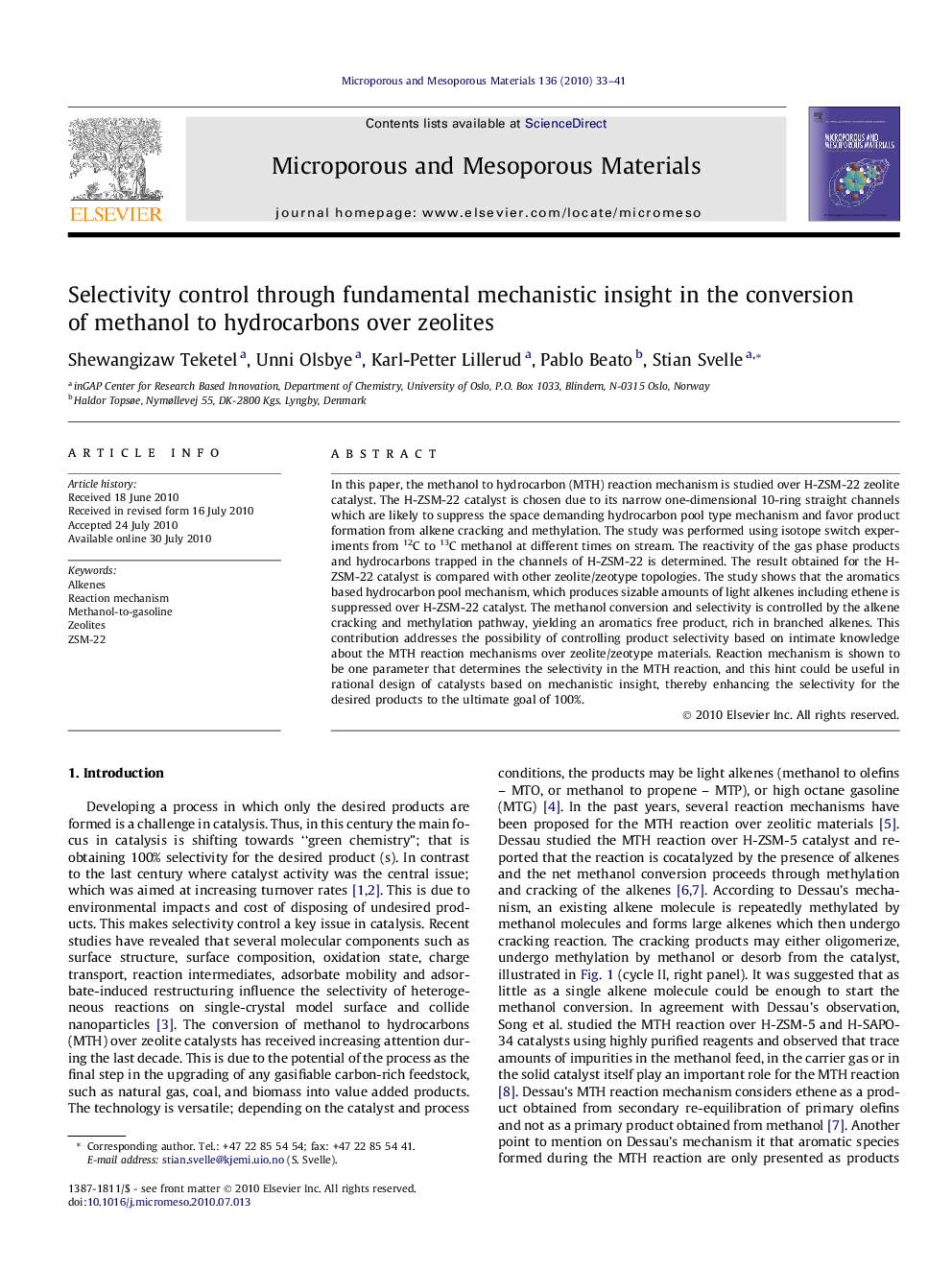| Article ID | Journal | Published Year | Pages | File Type |
|---|---|---|---|---|
| 75185 | Microporous and Mesoporous Materials | 2010 | 9 Pages |
In this paper, the methanol to hydrocarbon (MTH) reaction mechanism is studied over H-ZSM-22 zeolite catalyst. The H-ZSM-22 catalyst is chosen due to its narrow one-dimensional 10-ring straight channels which are likely to suppress the space demanding hydrocarbon pool type mechanism and favor product formation from alkene cracking and methylation. The study was performed using isotope switch experiments from 12C to 13C methanol at different times on stream. The reactivity of the gas phase products and hydrocarbons trapped in the channels of H-ZSM-22 is determined. The result obtained for the H-ZSM-22 catalyst is compared with other zeolite/zeotype topologies. The study shows that the aromatics based hydrocarbon pool mechanism, which produces sizable amounts of light alkenes including ethene is suppressed over H-ZSM-22 catalyst. The methanol conversion and selectivity is controlled by the alkene cracking and methylation pathway, yielding an aromatics free product, rich in branched alkenes. This contribution addresses the possibility of controlling product selectivity based on intimate knowledge about the MTH reaction mechanisms over zeolite/zeotype materials. Reaction mechanism is shown to be one parameter that determines the selectivity in the MTH reaction, and this hint could be useful in rational design of catalysts based on mechanistic insight, thereby enhancing the selectivity for the desired products to the ultimate goal of 100%.
